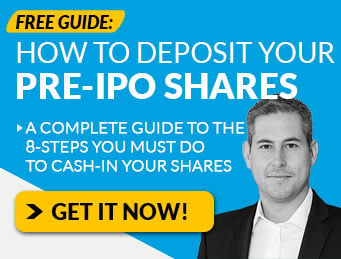Have questions about crowdfunding investing? If so, go here and fill out this short survey and I’ll answer them here in our newsletter.
Today’s question is one we hear a lot…
“How do I find (and invest in) a startup that will one day become a company worth $1B+”
Which, oddly enough, is often paired with something along the lines of “but I’m also risk averse and don’t want to lose any money.”
So, for all of you unicorn hunters out there who are looking for the magic secret to landing those brag-worthy gains…
…but also have a hard time thinking about the risk:reward dynamics of early stage investing…
It all comes back to the core framework we use here at Equifund called The 7 Power Laws.
If this is your first time hearing this term, whenever I’m doing due diligence on any company, I’m looking for indications that the company has the ability to scale big (and scale fast).
In my experience as a growth marketer, there are seven elements I’m looking at when scaling a company…
- Power Law #1: Purpose (Strength of Vision) – Do you believe the purpose of the business is big enough, exciting enough, and compelling enough to succeed against all odds?
- Power Law #2: People (Strength of Team) – Do you believe the management team has what it takes to attract, retain, and develop key talent needed to achieve their purpose?
- Power Law #3: Partners (Strength of Network) – Do you believe the company has the right relationships with other businesses, government agencies, or important market participants?
- Power Law #4: Intellectual Properties (Strength of Moat) – Do you believe this business has a clear strategy for expanding and protecting their competitive advantage?
- Power Law #5: Brand Promises (Strength of Products) – Do you believe in the company’s ability to fulfill its promises to its customers?
- Power Law #6: Promotions (Strength of Sales and Marketing Strategy) – Do you believe in the company’s ability to acquire, monetize, and retain new customers at scale?
- Power Law #7: Profits (Strength of Business Model) – Do you believe the company has the potential to deliver a meaningful financial return?
As early stage investors, we eventually get paid way way later on down the road as a function of Power Law #7…
But in the beginning when the business has limited operating history, the only reliable indicators we have to go on are the “big idea” of the business (Power Law #1: Purpose) and the founders ability to execute (Power Law #2: People).
Or put another way, your ability to “find the next unicorn” means taking a straight up gamble on an entrepreneur with an insane-sounding vision…
…the exact opposite of what most risk-averse investors want to do…
But if you’re serious about unicorn hunting, the first step is to overcome your fear of “losing money” by focusing on the most important thing in moonshot investing…
The upside potential of the insane idea coming true.
Enter: Jason Calacanis
Jason Calcanis is a self-proclaimed “Top Ten All-time Angel Investor” and for good reason.
He’s is an angel investor in Robinhood, Wealthfront, Uber, Desktop Metal, Datastax, Thumbtack, Superhuman, Trello, and Calm…
And he even wrote a great book called Angel: How to Invest in Technology Startups—Timeless Advice from an Angel Investor Who Turned $100,000 into $100,000,000 where he shares his “secrets” for finding unicorns…
No gamble, no future.
If you learn anything from this book, it’s that you must take risks as an angel investor and in life if you want at least the chance of an outsized outcome. This does not mean you should be reckless; in fact, it means the opposite.
I’ve studied and studied how people have built wealth as angel investors and I’ve focused on having an unfair advantage over them.
Simply put, if you want to be a certified unicorn hunter, it means taking risk.
But not just any random risk. It has to come with the potential for huge, asymmetrical returns.
Fixed downside (i.e. your entire investment) for unlimited potential upside.
And the more exposure you can get to these potential moonshots, the better your chances of “getting rich” from angel investing.
However, when you’re just starting out and learning how tech investing works, Calacanis promotes a simple philosophy for selecting companies…
“I tell people only to invest in companies that have gotten their product to market and have some customers. Hopefully, paying customers but if not, customers who were using the free product that you can at least talk to.”
The logic is pretty simple. With limited information and limited experience as an investor, the more signs of traction you have the easier it becomes to say “yes” to the deal.
And the single best indicator of early success? Customers who are using (and ideally) paying for the product!
Not surprisingly, we tend to take a similar approach here at Equifund. Generally speaking, we are looking for more mature companies than those that just have an “idea” to list on our portal.
But here’s the big difference you as an investor need to take into consideration when investing in crowdfunding deals…
According to Calacanis…
“If you’re a nobody who starts out, any deal flow that gets to you, by definition, has been picked over by all the qualified people.”
This is called the “Adverse Selection Bias” – which is the concept that all the good stuff is already taken…
Which is a huge problem if you’ve been told that you’re gonna get rich investing $100 into the next AirBnB… a deal you’re likely never going to see.
But here’s the truth about early stage investing…
Most companies will never receive venture capital, and most businesses shouldn’t.
And thanks to crowdfunding, we see a huge opportunity for certain types of companies who can leverage the true power of the crowd.
We call this strategy the Customer/Shareholder Flywheel…
And I believe this concept will be the driver of all “Crowdfunding Unicorns” that come out of this ecosystem.
The concept is pretty simple…
All of the best companies are obsessively customer focused, but most CEOs and investors aren’t.
As a result, people with too much control over the company tend to do stupid things in the interest of chasing returns instead of doing what’s right for the business.
But what if your shareholder base is primarily made up of your actual users and customers?
What if you had customers who love your product so much, they’re willing to buy equity in your company?
First, it probably means you’re going to have sticky revenue. If you had customers who love your product so much, they’re willing to buy equity in your company, they’re “in”.
Second, you’d be able to iterate way faster because your users are incentivized to give feedback and share their data with you.
Third, you now have an army of advocates who can help you with sales and marketing of the product.
And fourth, all of the stakeholders would be aligned with the things that truly drive the business forward: building lifetime customers who bring their friends with them.
But perhaps most important of all…
It gives you – the Crowdfunding investor – an entirely different lens to invest through.
Because if you invest into companies that can take advantage of this strategy – especially if you can help send them business – means you can have a direct impact on the potential success of your investments.
So, if you’re looking for the way to get better returns with less risk in an asset class that is inherently high risk…
Start with companies that have a purpose that you personally believe in… and a team of people who are obsessively customer focused.
Who knows what the business will look like 3, 5, even 10 years down the road…
But if they have a big vision for how the world could be a better place for their customers/shareholders – and the ambition to make it a reality – that’s as good of a leading indicator as anything else.
Sincerely,
Jake Hoffberg – Publisher
Equifund
P.S.
Want to learn the exact due diligence process we use to screen every private market deal we look at?













